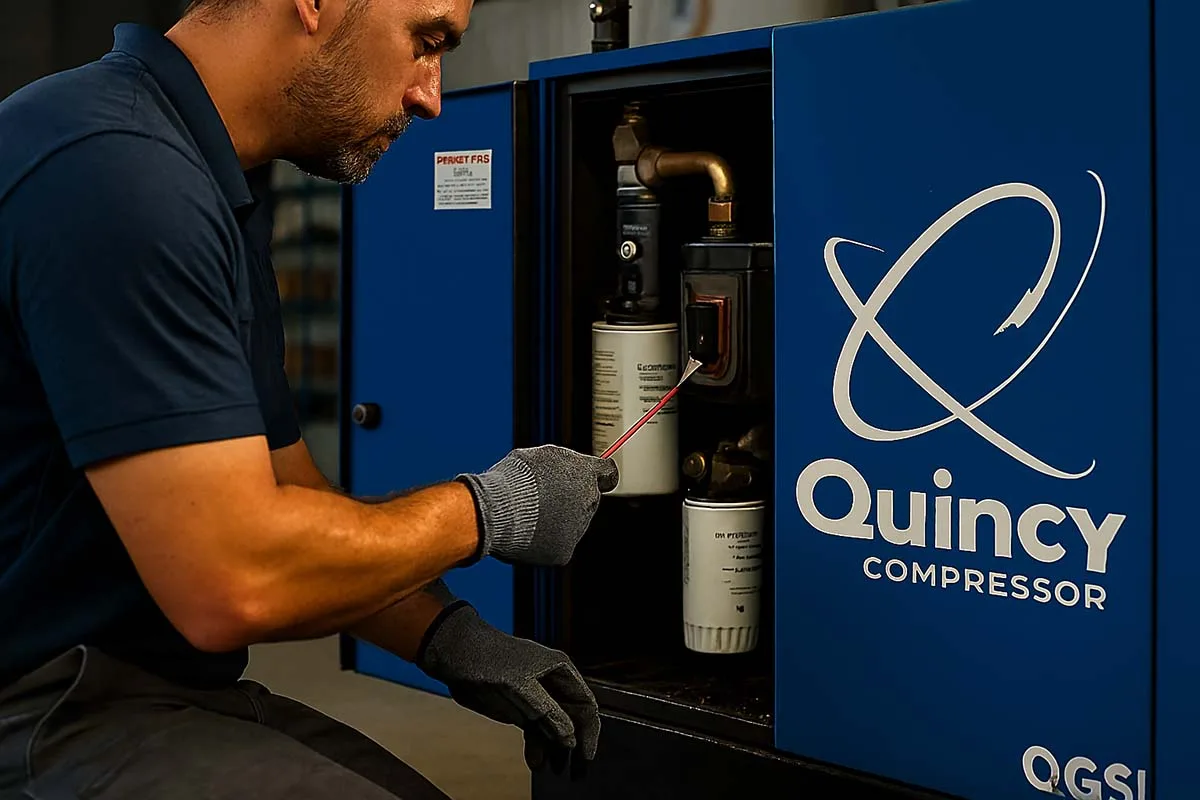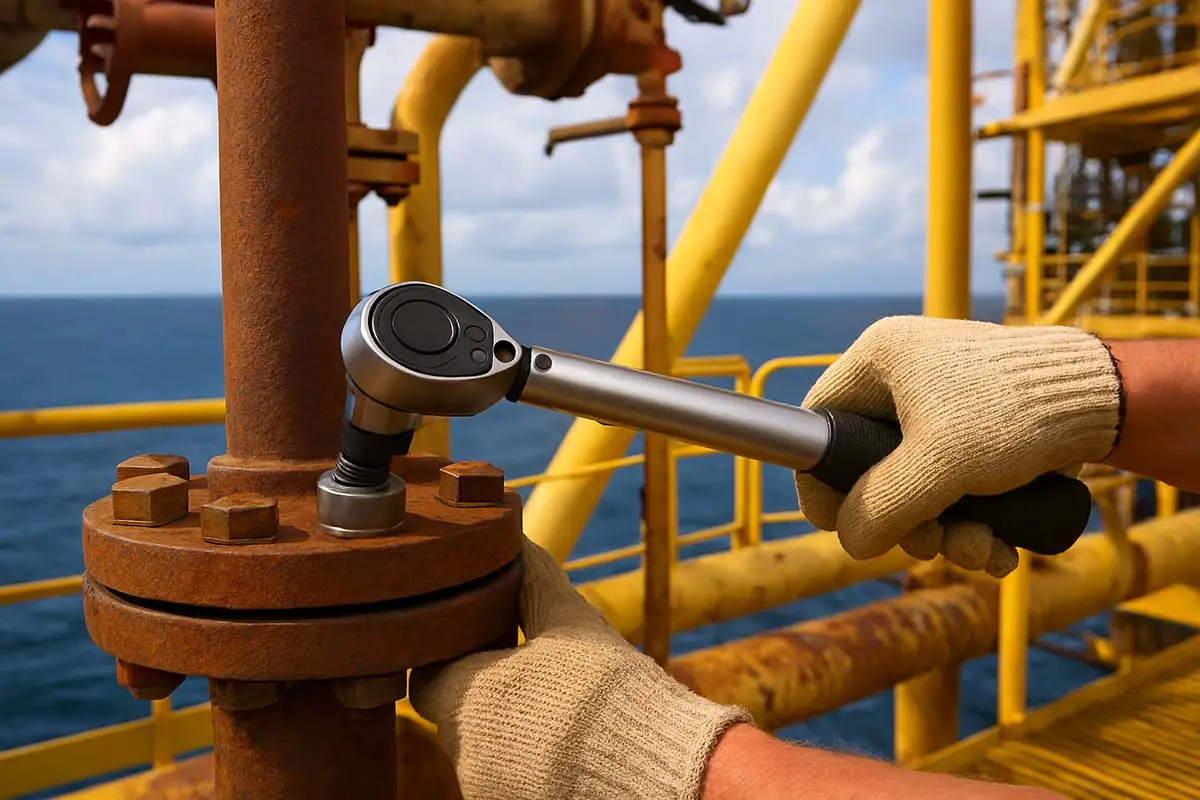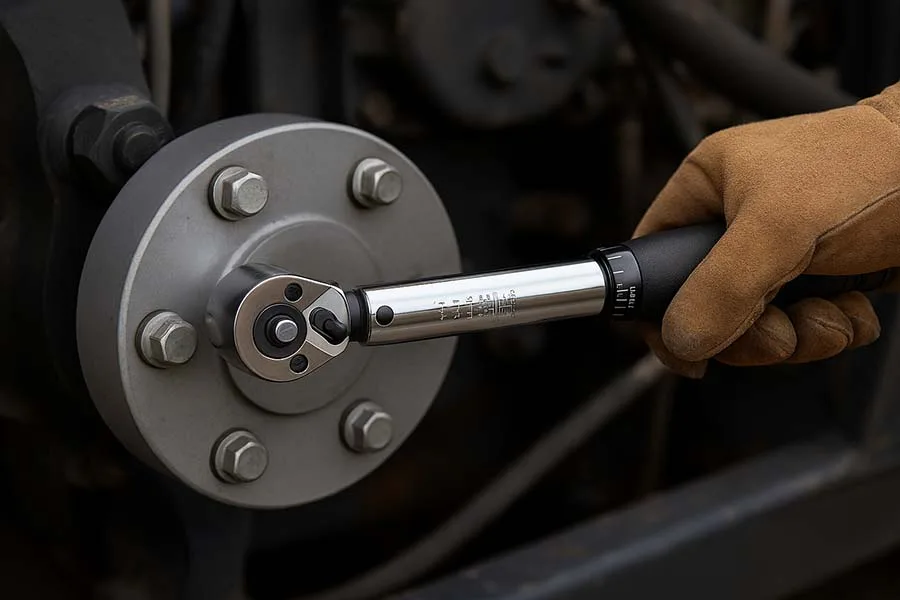Introduction
Whether you’re running a rotary screw or a reciprocating unit, proper maintenance is the key to keeping your Quincy compressor reliable, efficient, and long-lasting. The QGS Series and QR-25 are built for industrial-grade performance—but even the toughest machines need care.
This guide covers essential maintenance routines, service intervals, common failure points, and troubleshooting tips for both models. Whether you’re a technician, shop owner, or facility manager, this article will help you protect your investment and avoid costly downtime.
Maintenance Overview: Rotary Screw vs Reciprocating
| Aspect | QGS Series (Rotary Screw) | QR-25 (Reciprocating) |
|---|---|---|
| Duty Cycle | 100% continuous | 100% continuous |
| Oil Change Interval | Every 8,000 hours | Every 1,000–2,000 hours |
| Filter Replacement | Intake & oil filters every 8,000 hours | Air & oil filters every 1,000–2,000 hours |
| Cooling System | Air-cooled aftercooler | Intercooler with fins |
| Wear Points | Bearings, belts, seals | Valves, rings, bearings |
| Startup Requirements | Authorized technician for warranty | Loadless starting via intake unloaders |
| Noise Level | Quiet enclosure | Louder, especially at startup |
Routine Maintenance Checklist
🔹 QGS Series
- ✅ Check oil level weekly
- ✅ Replace synthetic lubricant every 8,000 hours
- ✅ Inspect and replace intake filter every 8,000 hours
- ✅ Clean cooling fins and check aftercooler
- ✅ Inspect belts for tension and wear
- ✅ Drain moisture from tank and dryer (if equipped)
- ✅ Log operating hours and service intervals
🔹 QR-25
- ✅ Check oil level daily
- ✅ Change oil every 1,000–2,000 hours
- ✅ Inspect valve seats and replace if worn
- ✅ Clean intercooler fins and inspect for blockage
- ✅ Replace air filter and oil filter regularly
- ✅ Check flywheel alignment and belt tension
- ✅ Monitor vibration and unusual noise
Common Issues & Troubleshooting
| Symptom | Possible Cause | Solution |
|---|---|---|
| Low pressure output | Clogged filter, worn valves | Replace filters, inspect valve seats |
| Excessive noise | Loose belts, worn bearings | Tighten belts, inspect bearings |
| Oil carryover | Overfilled oil, worn seals | Drain excess oil, replace seals |
| Overheating | Dirty cooling fins, poor ventilation | Clean fins, improve airflow |
| Startup failure | Electrical issue, unloader malfunction | Check wiring, inspect intake unloaders |
Authorized Service vs DIY
While Quincy compressors are designed for technician-friendly access, some tasks—like startup calibration, warranty activation, and internal rebuilds—should be handled by authorized service providers. DIY maintenance is great for routine checks, but professional support ensures long-term reliability and protects your warranty.
Maintenance Costs & ROI
- QGS Series: Lower maintenance frequency, higher upfront cost, long-term savings
- QR-25: More frequent service, but rebuildable and extremely durable
Investing in proper maintenance can extend compressor life by 5–10 years, reduce energy costs, and prevent catastrophic failures. A well-maintained unit pays for itself in uptime and efficiency.
Quincy Compressor Maintenance Guide FAQ
Interesting Fact
Quincy’s synthetic lubricant for the QGS Series lasts up to 8,000 hours—nearly double the interval of many competitors.
Lesser-Known Fact
The QR-25’s valve seats are lapped cast iron, offering superior sealing and longevity compared to standard aluminum seats.
Read More
- Quincy QGS Series Review: Rotary Screw Compressors
- Quincy QR-25 Review: Heavy-Duty Reciprocating Compressor
- Quincy QGS Series Review: Quiet Rotary Screw Compressors
- Quincy Compressor Maintenance Guide: Keep Your QGS and QR-25 Running at Peak Performance
- Quincy QR-25 vs Ingersoll Rand 2475
- Atlas Copco GX vs Quincy QGS: Rotary Screw Compressors Compared
- Atlas Copco
- How to Troubleshoot Common Compressor Problems
- How to Improve Energy Efficiency of Your Compressor
- Portable vs Stationary Compressor: Which One Should You Buy?
- Top 10 Mistakes When Buying a Compressor (and How to Avoid Them)
Conclusion: Maintain It Like You Mean It
Your Quincy compressor is built to last—but only if you treat it like the industrial asset it is. Whether you’re running a QGS rotary screw or a QR-25 piston unit, consistent maintenance is the difference between smooth operation and costly downtime.
Have tips or tricks for keeping your Quincy running strong? Share them in the comments or tag us on LinkedIn. Your insights help others extend the life of their tools—and build a smarter, more resilient industrial community.





